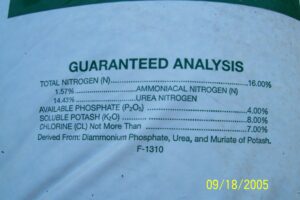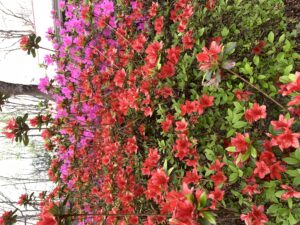Plant Health Alert – Shrubs Need Fertilizer
go.ncsu.edu/readext?871070
en Español / em Português
El inglés es el idioma de control de esta página. En la medida en que haya algún conflicto entre la traducción al inglés y la traducción, el inglés prevalece.
Al hacer clic en el enlace de traducción se activa un servicio de traducción gratuito para convertir la página al español. Al igual que con cualquier traducción por Internet, la conversión no es sensible al contexto y puede que no traduzca el texto en su significado original. NC State Extension no garantiza la exactitud del texto traducido. Por favor, tenga en cuenta que algunas aplicaciones y/o servicios pueden no funcionar como se espera cuando se traducen.
Português
Inglês é o idioma de controle desta página. Na medida que haja algum conflito entre o texto original em Inglês e a tradução, o Inglês prevalece.
Ao clicar no link de tradução, um serviço gratuito de tradução será ativado para converter a página para o Português. Como em qualquer tradução pela internet, a conversão não é sensivel ao contexto e pode não ocorrer a tradução para o significado orginal. O serviço de Extensão da Carolina do Norte (NC State Extension) não garante a exatidão do texto traduzido. Por favor, observe que algumas funções ou serviços podem não funcionar como esperado após a tradução.
English
English is the controlling language of this page. To the extent there is any conflict between the English text and the translation, English controls.
Clicking on the translation link activates a free translation service to convert the page to Spanish. As with any Internet translation, the conversion is not context-sensitive and may not translate the text to its original meaning. NC State Extension does not guarantee the accuracy of the translated text. Please note that some applications and/or services may not function as expected when translated.
Collapse ▲Shrubs and trees need proper nutrition throughout the growing season to remain healthy and vigorous. Just as you can’t eat enough food on Sunday night to get through the week, we can’t expect our actively growing plants to get by on one yearly fertilizer application either.
Instead, we recommend applying fertilizer at least three times during the growing season for actively growing shrubs. The first application of fertilizer should be in March, the second in May and the last application in July. In certain situations, a final light application of low-nitrogen fertilizer such as 0-5-10 can be applied in early September to ensure that your shrubs are well nourished through the fall and winter months.
The best fertilizer materials for shrubs are 4-1-2 or 3-1-2 ratios. This would be an analysis such as 16-4-8 or 12-4-8. The analysis is found on the fertilizer bag or box, the three numbers referring to nitrogen, phosphorus and potassium respectively. We suggest using these ratio-type fertilizers because shrubs use a large amount of nitrogen but they don’t need a lot of phosphorous since it accumulates in the soil. However, if the above analyses cannot be found, then you can still use a general-purpose fertilizer, such as 10-10-10.
The rates for each application should be two level teaspoons per foot of height if you are using the 12-4-8 or 16-4-8 materials or one level tablespoon if you are using a10-10-10 fertilizer. When you purchase the fertilizer make sure it is not a weed-and-feed formulation that contains a post-emergence chemical that kills weeds. Weed-and-feed products that contain post-emergence herbicides can injure plants if applied to shrubs and flowerbeds.
Also, note if the nitrogen component of your fertilizer is all or part slow-release. If it is a slow-release material, be certain to follow all label directions. Make sure that you do not exceed the recommended rates. This is especially important since the danger from salt injury is particularly great during the hot summer months.
When applying fertilizers, broadcast the amount evenly over the root system rather than placing the fertilizer in only one or two spots. This allows for even root uptake and helps to avoid concentrating the fertilizer material, which can then result in root damage or death. There is no need to remove the mulch material, such as pine bark or pine straw as the fertilizer nutrients will wash into the root zone. After applying fertilizer, always water it in thoroughly.






